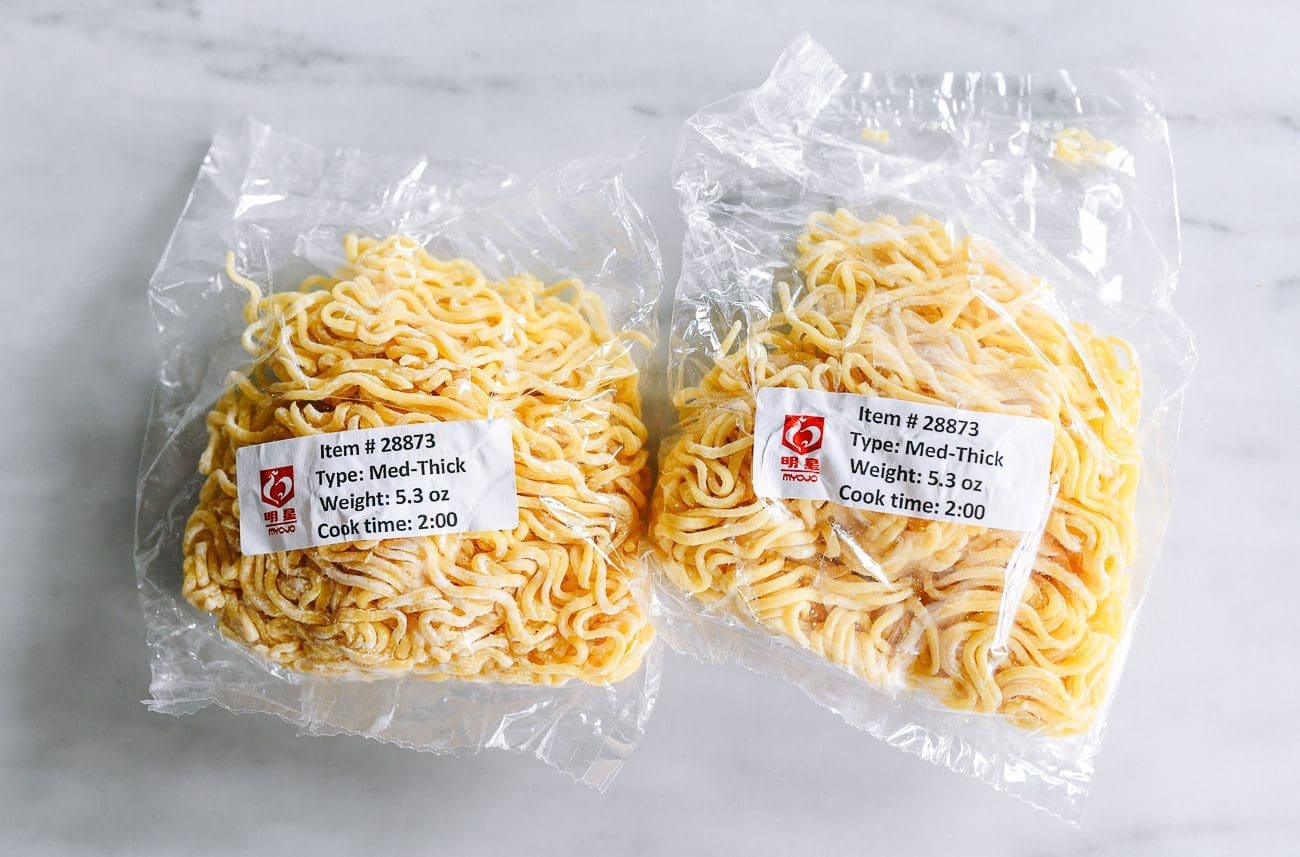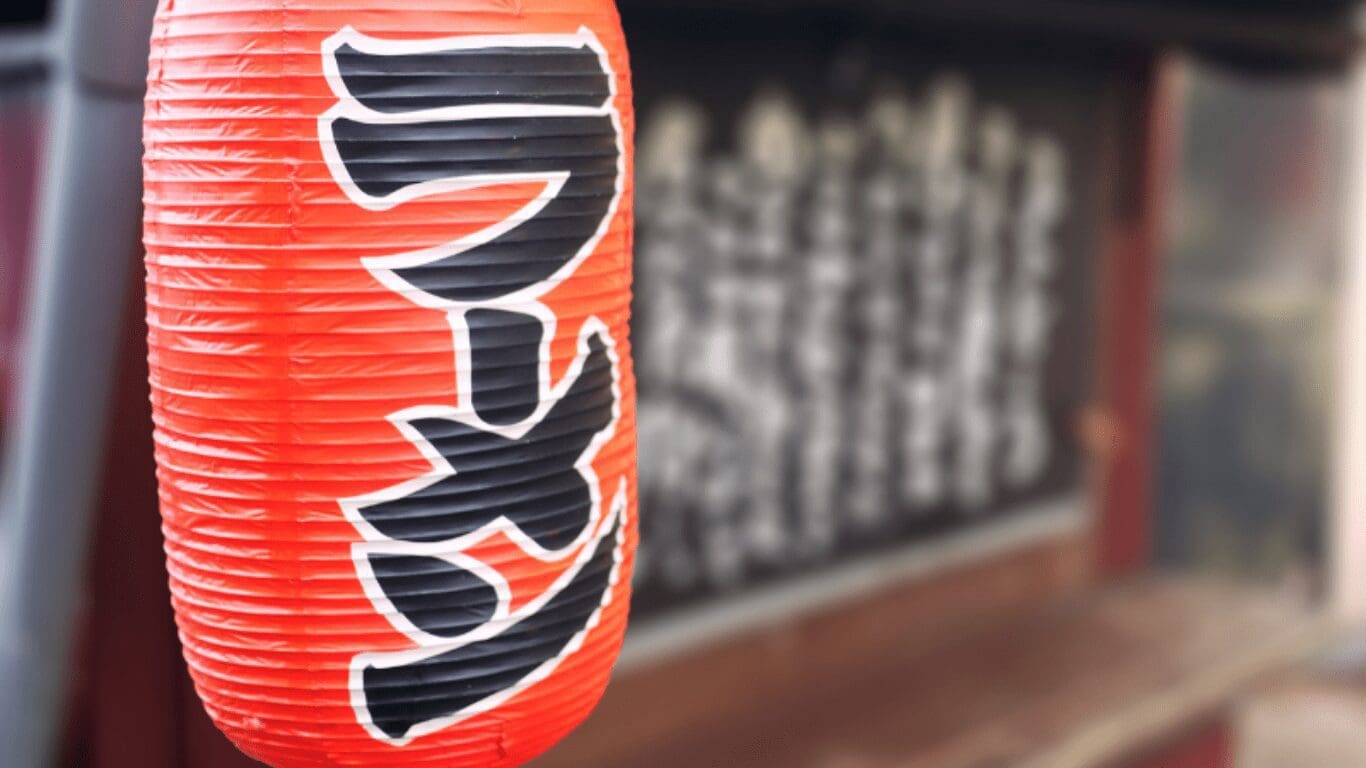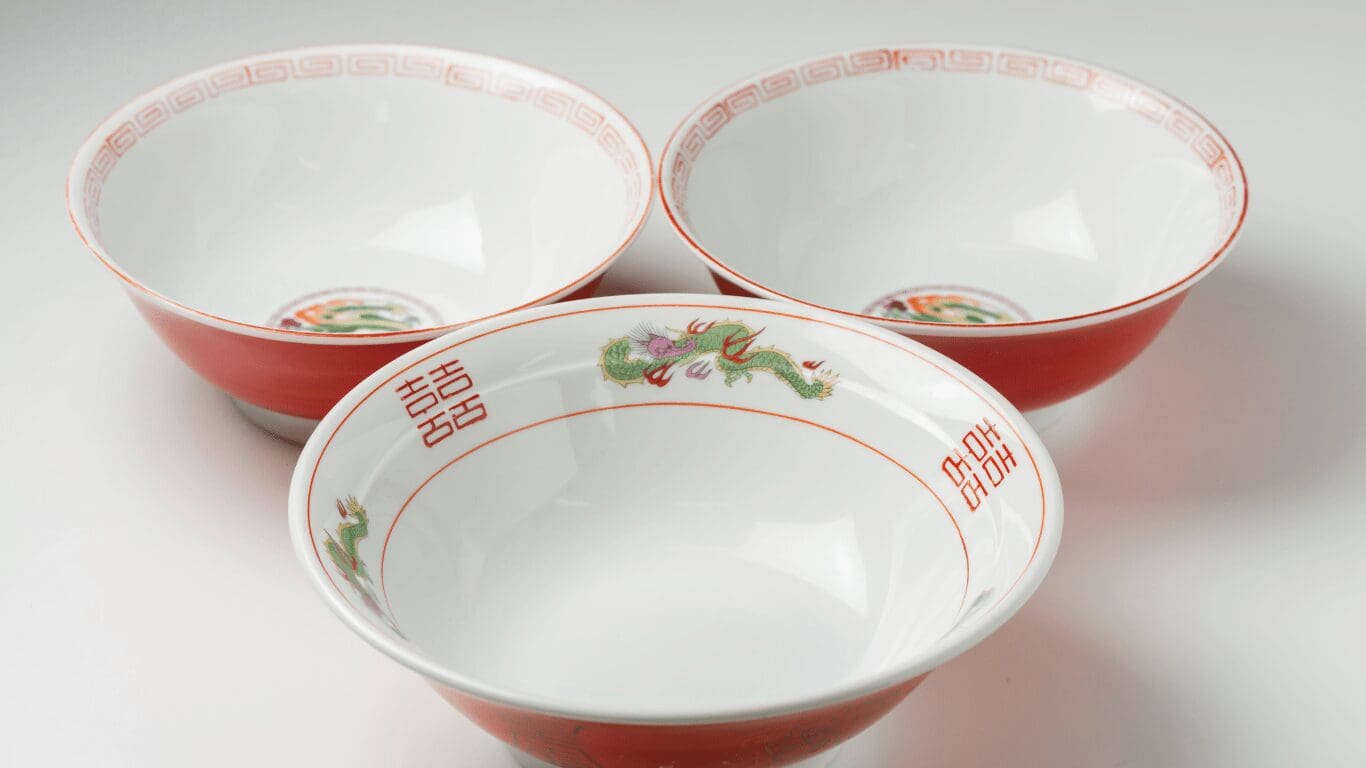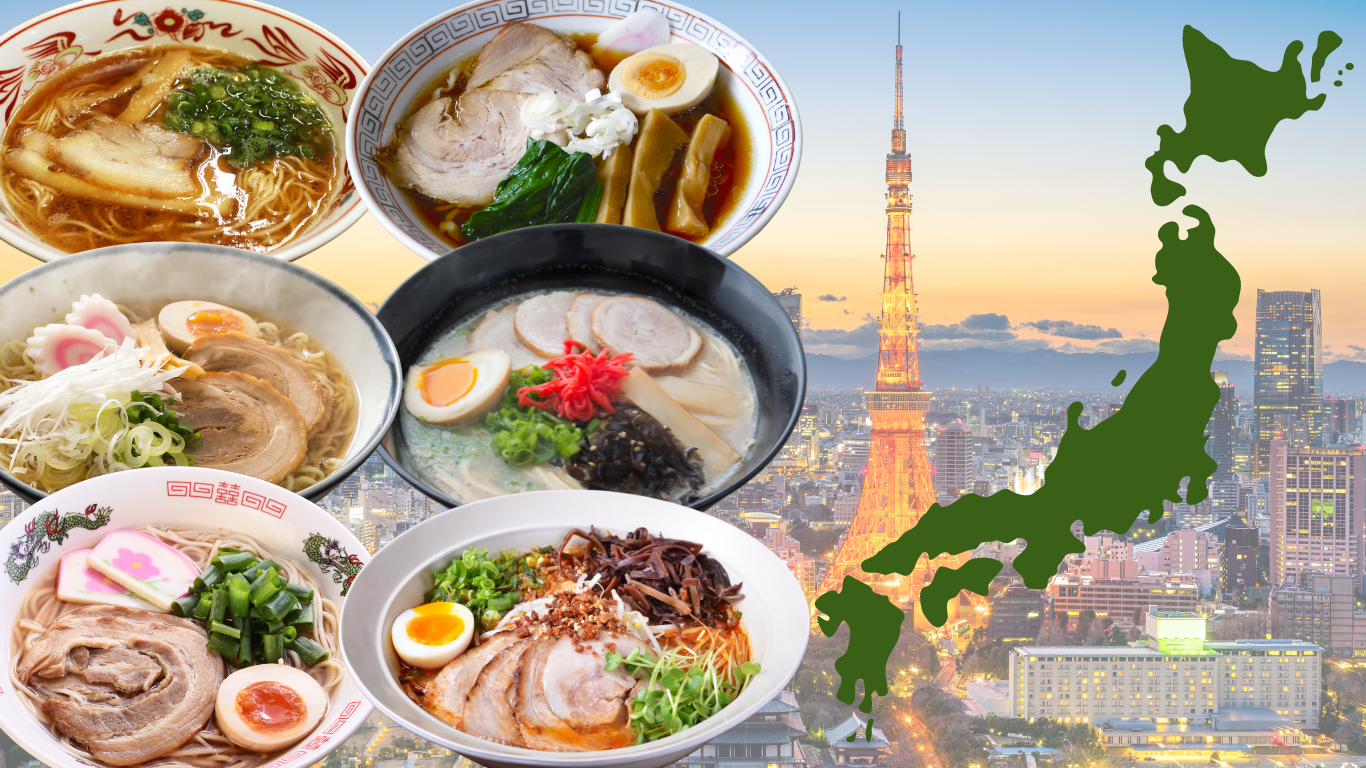The Ultimate Guide to Fresh Ramen Noodles: From Homemade Recipe to Enjoying Them at Their Best.
Published: Dec 2, 2021/ Last Updated:Apr 1, 2025
- 14 min read
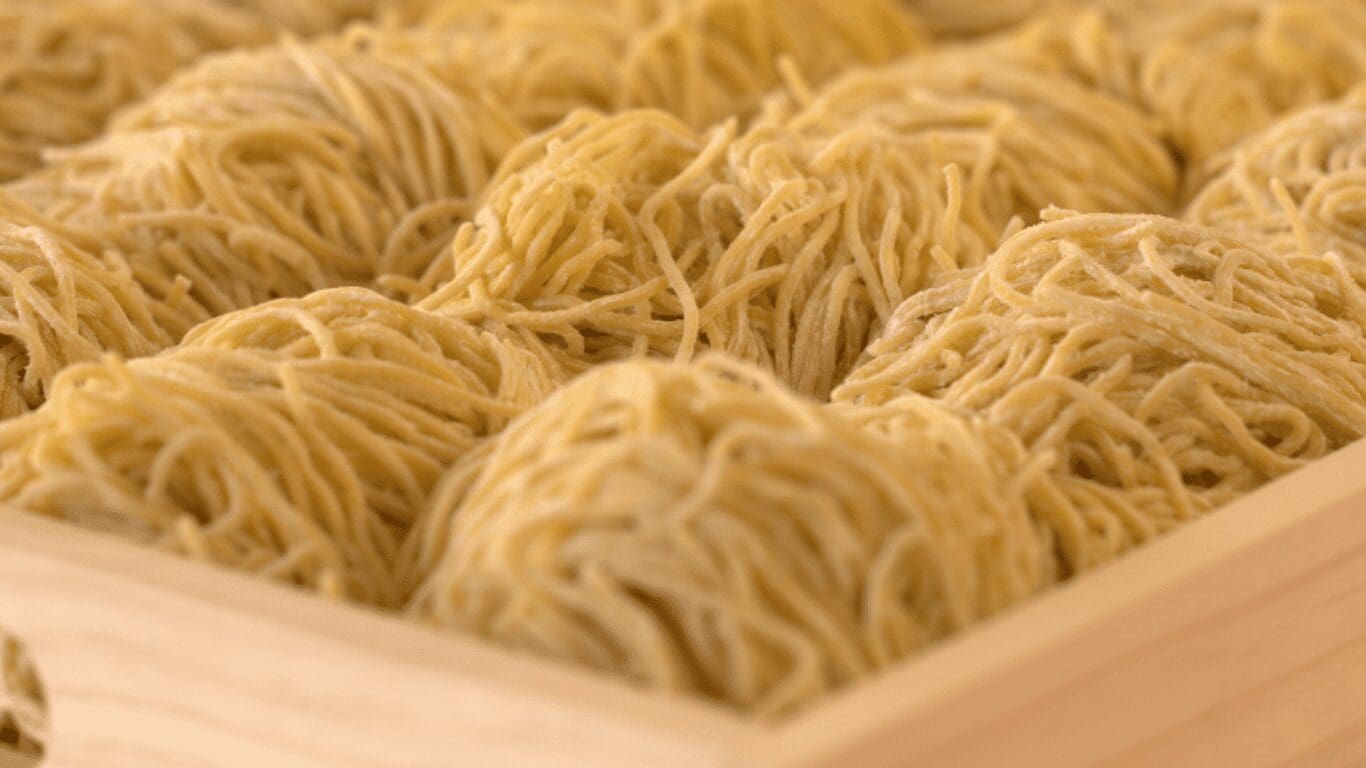
For generations, pasta has been a widely loved dish in the United States, but in recent years, various noodle dishes from Asia have gained popularity. Chow mein from China, pad thai from Thailand, pho from Vietnam, and numerous Japanese noodles like ramen, udon, and yakisoba are now well known.
When first introduced, Japanese noodles, especially ramen, were often enjoyed at restaurants or in the form of instant noodles at home. The dried instant noodles are cooked when hot water is added, making it a convenient meal. However, there’s another option that’s also easy to make at home, but instead of dry noodles, these are “fresh” ramen noodles more similar in taste and texture to restaurant-quality noodles. How do fresh ramen noodles differ from conventional instant ramen noodles? Let’s find out.
Today, we explore the characteristics of “fresh ramen noodles,” which has attracted more attention recently over the large variety of Japanese ramen products offered at markets.
- Index
- Different Types of Noodles in Stores
- Differences Between Fresh Ramen Noodles, Dried Ramen Noodles, and Instant Ramen Noodles
- How to Store Fresh Ramen Noodles
- How to Cook Delicious Fresh Ramen Noodles
- Myojo USA’s “Fresh Ramen Noodles”
- The Best of Both Worlds?! What are “Long Life Noodles”?
- Homemade Fresh Ramen Noodles Recipe!
- Conclusion
■ Different Types of Noodles in Stores
Let’s begin with a brief review of the general noodle manufacturing process. First, the dough for the noodles is made by mixing flour (wheat or rice) with water, saline solution, and alkaline salt aqueous solution. The dough is then stretched and cut or squeezed into strands to form so-called “fresh noodles.” Various types of noodles are manufactured based on the type of dough, the method of forming the noodles, and the overall shape of the cut for the noodles. From here, there are additional steps and multiple methods made to manufacture the noodles to be sold at retail stores.
- Boiled noodles
This method includes simply boiling the fresh noodles to create a soft texture. In Japan, this method is often used to manufacture udon noodles, though it doesn’t allow for a long shelf life.
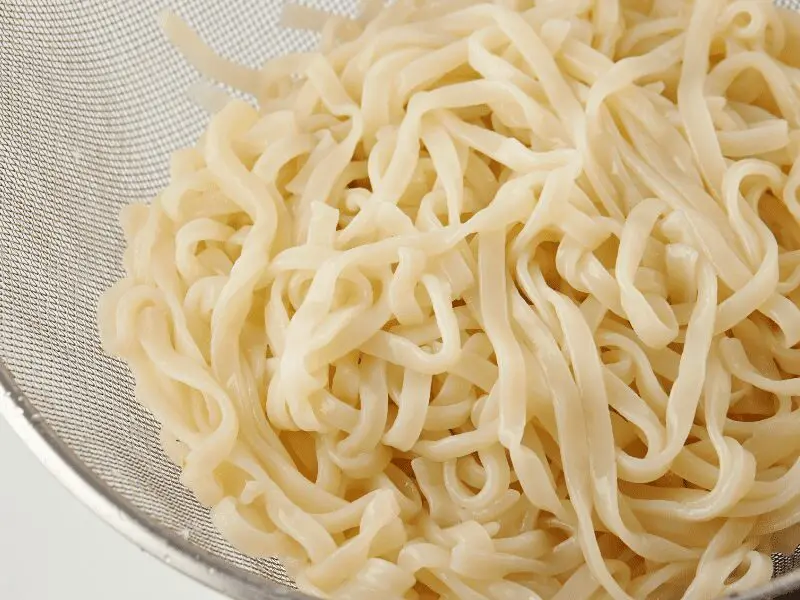
- Steamed noodles
This method includes steaming the fresh noodles and is commonly used for yakisoba. This process also doesn’t yield a long shelf life.
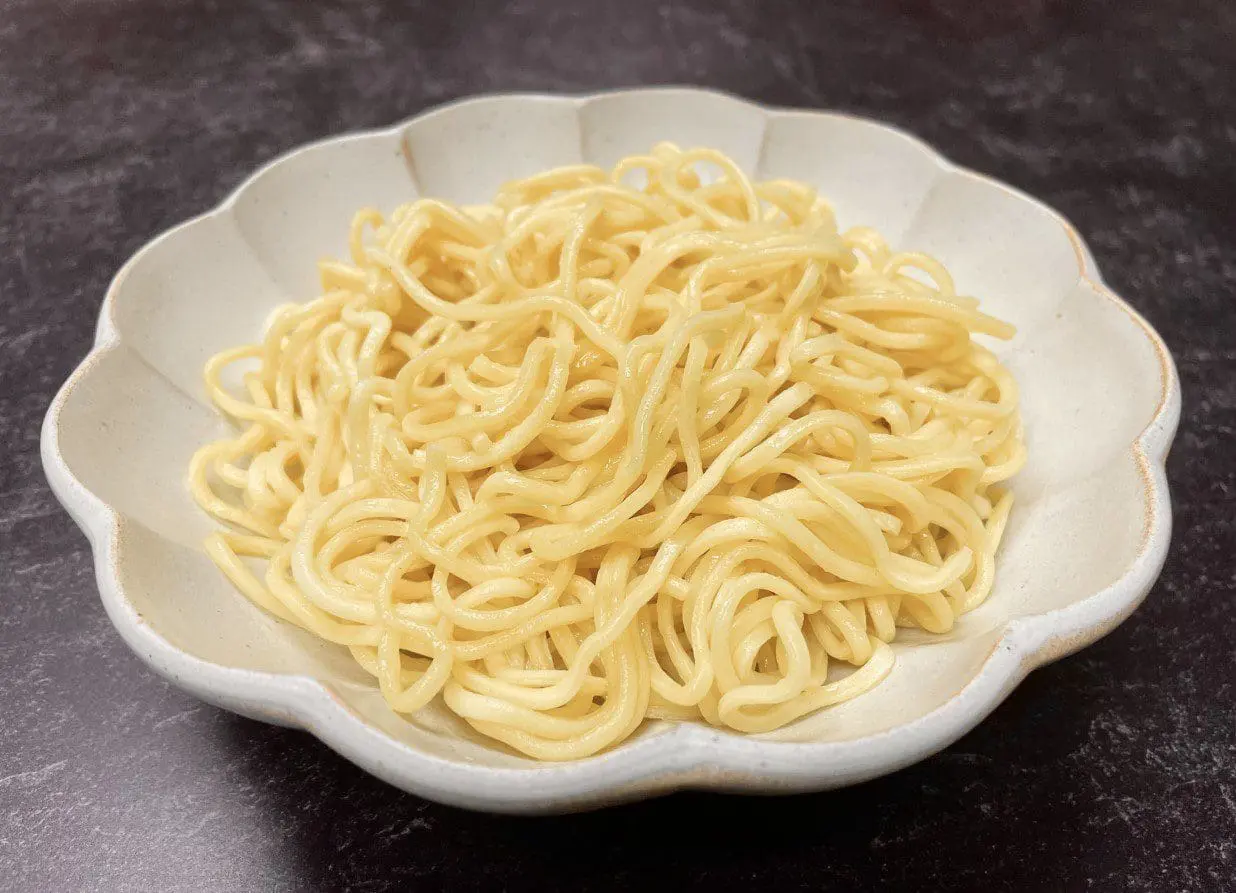
- Dried noodles
This is a method in which the fresh noodles are dried, widely done to preserve pasta. In Japan, it’s also used for soba and udon, as well as hiyamugi and somen noodles, though the latter two noodles are not as popular in the United States. Generally, this process is characterized by generating a long shelf life and yielding an al dente noodle texture.

- Instant noodles
Although there isn’t a clear method set for instant noodles, the process usually consists of steaming fresh noodles and then deep frying or drying them with hot air.
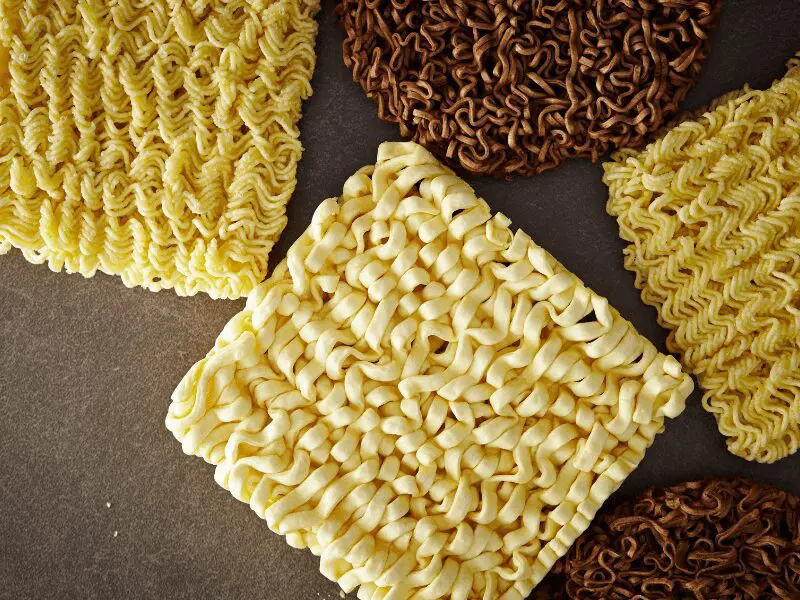
There are other types of noodles such as half-raw noodles and frozen noodles, but we believe it’s enough to first understand the basic differences listed above. The noodles you’ll find in the supermarket are categorized as either fresh noodles or noodles preserved with one of the preservation processes.
So, the next time you’re at the supermarket, you may find it interesting keeping in mind which process was used for the bowl of udon or packet of ramen you have in hand.
The “fresh ramen noodles” that we would like to introduce today are sold in the state of “fresh noodles” without any additional methods from the list above.
■ Differences Between Fresh Ramen Noodles, Dried Ramen Noodles, and Instant Ramen Noodles
Now that you understand the various methods used to manufacture noodles, let’s look at how this is currently being applied specifically to ramen products sold at supermarkets. As previously mentioned, the number of fresh ramen noodles has increased recently, but there are still multiple flavors and types of instant ramen to choose from. At Japanese supermarkets, you can also find dried ramen noodles (different from instant noodles)—boiled ramen noodles and steamed ramen noodles are not commonly found in the United States. Figuring out which ramen noodle product will match your taste can be overwhelming when there is a big selection to choose from. We will explain the differences between each noodle type to help you choose the most suitable ramen according to your taste.
- Texture
In terms of texture, fresh ramen noodles are superior. The biggest trait of fresh ramen noodles is that its texture is similar to what you’d find at a restaurant. It is undeniable that instant ramen noodles and dried ramen noodles are unsatisfactory in that respect. For those who think, “I want to recreate the ramen I ate at that one restaurant,” there is no doubt that fresh ramen noodles are the best choice.
- Texture
- Boiling time
In general, the boiling time of fresh noodles is often shorter than that of dried noodles. For example, regular spaghetti takes 1 to 4 minutes for fresh noodles, and 7 to 9 minutes for dried noodles. Even in ramen, dried ramen noodles tend to boil for a longer time compared to fresh ramen noodles (depending on the thickness of the noodles). However, there isn’t a substantial difference in the boiling time between fresh ramen noodles and instant ramen noodles. It often takes about 1 to 3 minutes to boil fresh ramen noodles, which is similar to that of most instant ramen noodles.
- Boiling time
- Storage
Dried ramen noodles and instant ramen noodles can be stored anywhere at room temperature, which makes them excellent for storage. Fresh ramen noodles have a stricter guideline that needs to be followed.
■ How to Store Fresh Ramen Noodles
Though fresh ramen noodles are superior in taste, dried noodles and instant noodles win in storage stability. However, there are some methods used to store fresh noodles for a relatively long time without spoiling the flavor. Here are some tips for preserving fresh ramen noodles.
- When storing in the refrigerator
When storing in the refrigerator, it’s recommended to place the fresh noodles where the temperature doesn’t fluctuate. Therefore, a door shelf that is frequently opened and closed is not the best choice as the temperature will change often. The back of the refrigerator, which is directly exposed to cold air, is also not a suitable spot. The dew condensation that is likely to occur in this spot can make the noodles soggy. Implementing these methods, our Myojo USA Signature Ramen Series and Premium Ramen Series, for example, will last for about 3 weeks if stored in the refrigerator before the expiration date.
- When storing in the freezer
If you can’t eat within the deadline mentioned above, divide the noodles into portions and store them in the freezer. For example, the noodles in our Myojo USA Signature Ramen Series and Premium Ramen Series are already individually packaged and make storing convenient. When you’re in a hurry, you can boil the frozen noodles directly out of the freezer, but there’s a possibility that they will boil unevenly, so we recommend that you thaw them in the refrigerator the day before or you let them thaw naturally for about 1 hour at room temperature before cooking. This way, the noodles will boil evenly and taste delicious.
■ How to Cook Delicious Fresh Ramen Noodles
When purchasing fresh ramen noodles, you can cook them according to the instructions on the package, but you can make the ramen even more delicious with these cooking tips.
- Prepare plenty of boiled water
Boil a sufficient amount of water (at least 1 liter, or ideally 2 liters) so that the noodles do not stick to each other. Make sure the water is boiled before adding the noodles as the noodles lower the water’s temperature.
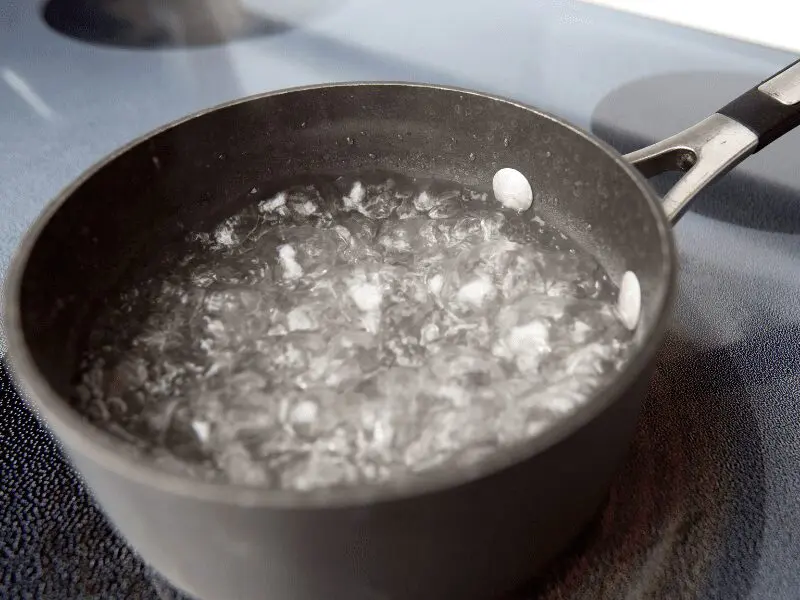
- Prepare the soup and toppings in advance
Ramen noodles are most delicious when you eat it freshly cooked. The noodles are prone to getting soggy quickly, losing its nice al dente texture. Therefore, prepare soup and toppings in advance so that you can serve your bowl of ramen while it’s fresh. It’s recommended to warm the bowl in hot water before adding the soup as well to keep the ramen hot while you eat it.
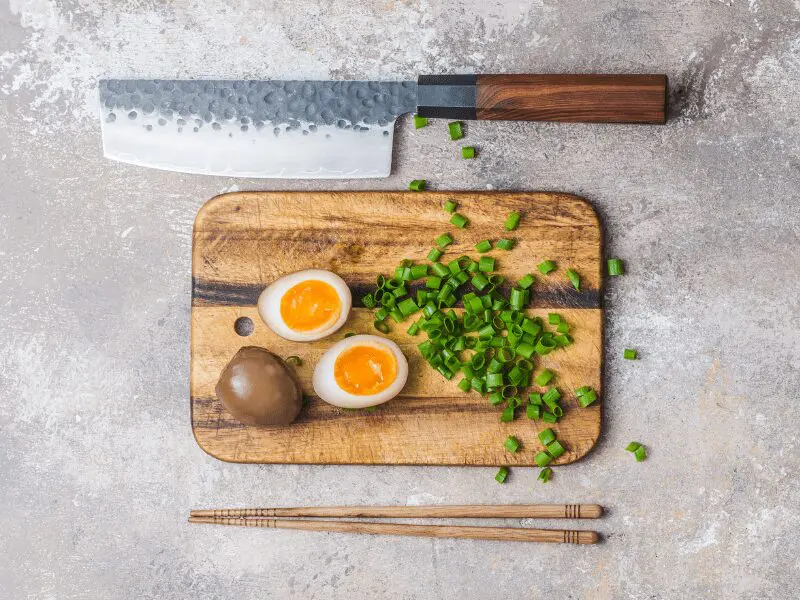
- Cook one serving of noodles at a time
If you add a lot of noodles at once, the temperature of the hot water will plummet, cooking the noodles unevenly. Cook one serving of noodles at a time in plenty of water while gently loosening the noodles. Individually packaged noodles are convenient when gauging how much one serving is.
- No watering while cooking
In Japanese cuisine, there is a cooking technique called “watering”, also known as “Bikkuri-Mizu (びっくり水)” which means “surprise water”. This is when water is added to a boiling pot of food such as beans, dried food, and dried noodles to prevent the hot water from boiling over. It’s an old cooking technique for boiling over firewood when the temperature was difficult to adjust. Watering is an effective method for dried noodles that are boiled for a long time. However, it’s not recommended for fresh noodles that are boiled for a short time because watering will yield an uneven texture.
As a side note, following the package directions is recommended, as well as checking that the noodles have the desired texture before draining.
After cooking, drain the noodles thoroughly and serve them with toppings in a bowl of soup. Please eat as soon as possible before the noodles get soggy!
■ Myojo USA’s “Fresh Ramen Noodles”
Myojo USA sells a variety of fresh ramen noodles for you to enjoy authentic Japanese ramen at home. Our ramen noodles are easy to cook and prepare yet uphold the restaurant-quality taste and texture. We have a large selection of soup types, from well-known ones such as tonkotsu, shoyu (soy sauce), and miso, to regional Japanese ramen such as Okinawa Soba and Hakata Tonkotsu Ramen. With our wide variety of flavors and types of ramen, we’re sure you’ll find your favorite ramen dish! Additionally, we also offer fresh yakisoba (fried noodles). We’re confident the stir fried mochi-like texture of the noodles will become one of your favorites once you taste them!
・Premium Ramen
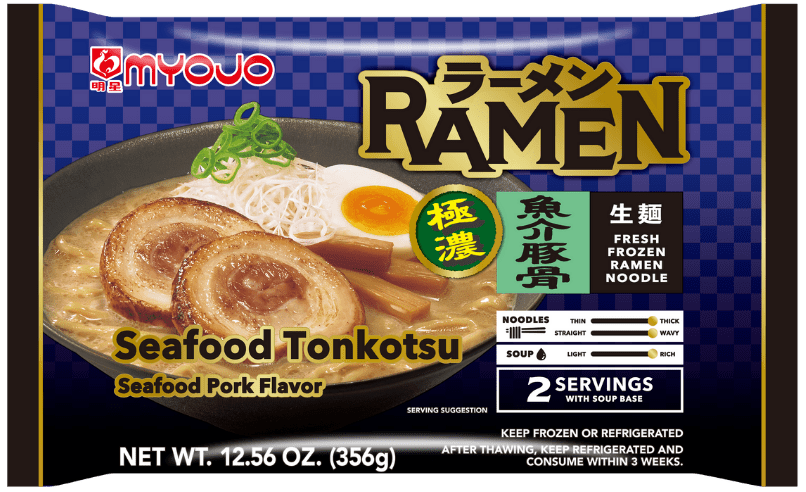
The PREMIUM SERIES ramen offers a special selection of rich flavors and deep umami. Each variety features carefully chosen ingredients and expertly crafted broths, delivering a luxurious bowl of ramen that feels like you’re dining at a specialty shop.
From bold flavors like garlic miso and tantanmen to vegetarian-friendly shoyu ramen and creamy tonkotsu, the series offers a wide range of tastes to suit any preference. Each bowl is designed to perfectly balance the broth and noodles, ensuring a satisfying and hearty meal.
By adding your favorite toppings, you can further customize the ramen to your liking, enhancing the natural flavors. Enjoy the authentic taste of premium ramen at home with the PREMIUM SERIES.
・Signature Ramen

The SIGNATURE SERIES is a diverse collection of ramen that blends classic flavors with modern appeal. Each bowl offers a satisfying and delicious experience, making it easy to enjoy authentic ramen at home. From nostalgic flavors to those with a little extra kick, the SIGNATURE SERIES offers a variety that everyone can enjoy.
Each ramen in the SIGNATURE SERIES can be customized with your favorite toppings, allowing you to enjoy it in a classic style or experiment with different ingredients for a new flavor experience. Whatever the occasion, these ramens will provide a satisfying and enjoyable bowl.
・Plant-Based Ramen
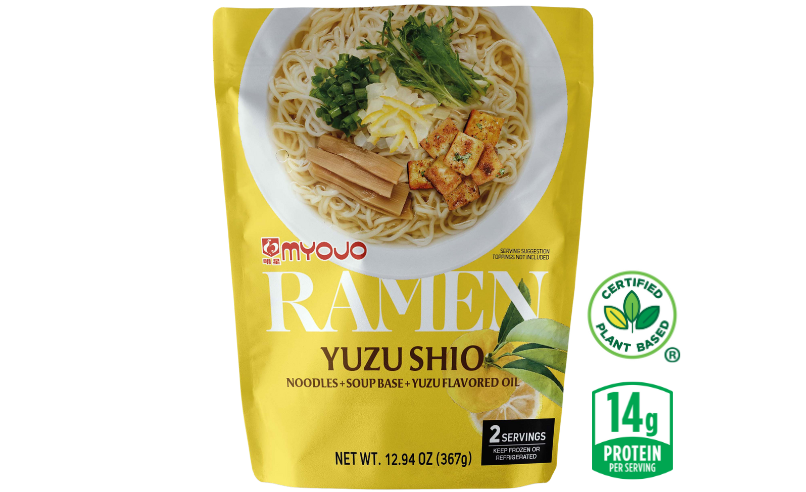
The PLANT-BASED SERIES is a collection of ramen that brings rich, flavorful tastes to life using plant-based ingredients, making it enjoyable for everyone. It’s perfect for vegans and vegetarians, offering authentic, restaurant-quality ramen that you can easily enjoy at home without compromising on taste.
The YUZU SHIO RAMEN features a refreshing yuzu oil and a light broth enhanced by the sweetness of onions, while the PLANT-BASED CREAMY TONKOTSU RAMEN delivers a creamy, rich flavor with a hint of garlic in the broth. Both options provide a satisfying and delicious experience.
Certified plant-based and suitable for vegans and vegetarians, the PLANT-BASED SERIES is the ideal choice for those who want to enjoy rich flavors while embracing a plant-based lifestyle.
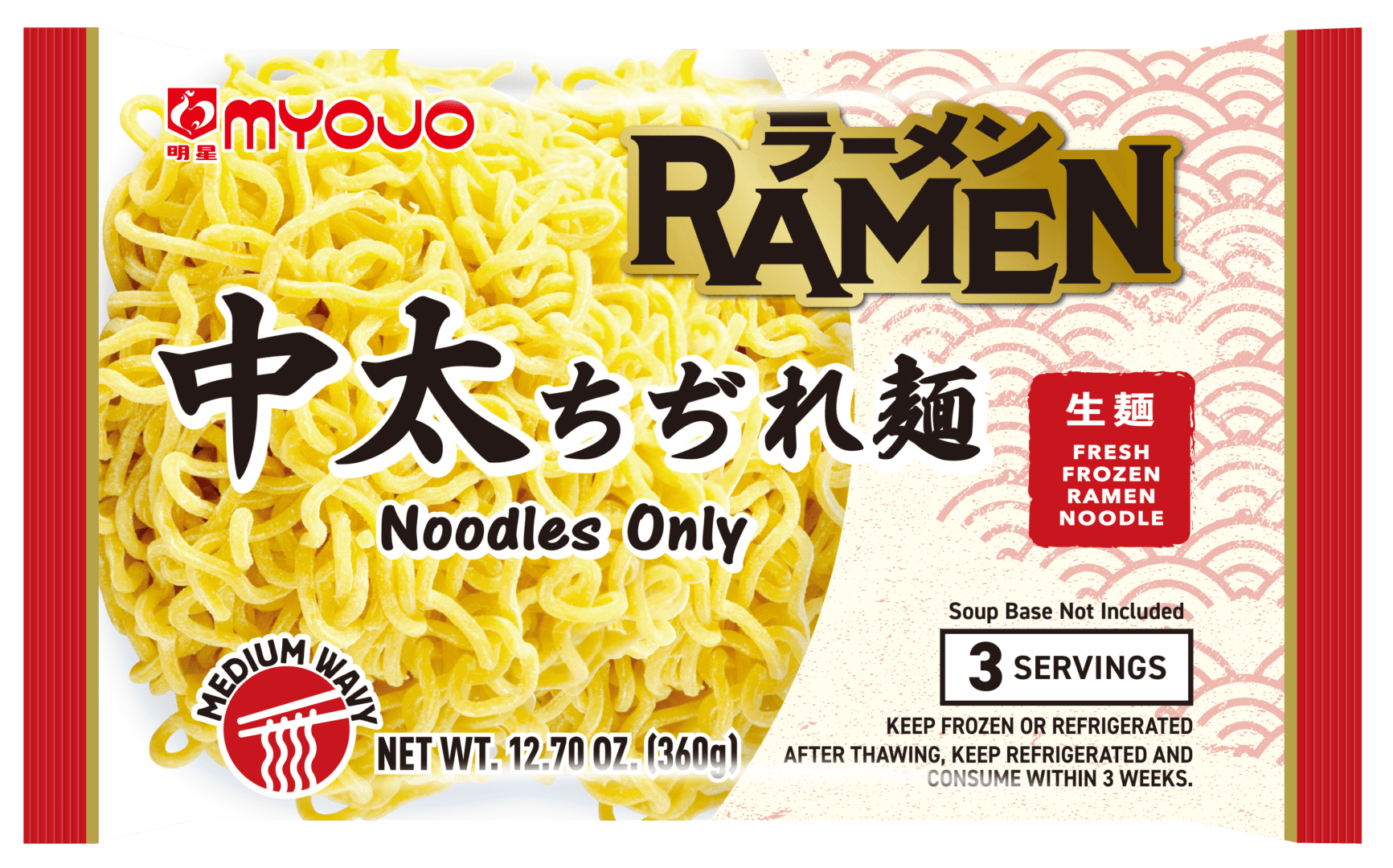
The RAMEN NOODLES ONLY series offers the ultimate lineup for an authentic ramen experience or creating your favorite noodle recipes at home. Featuring a variety of noodle types, each one is meticulously crafted to pair seamlessly with any soup. These noodles boast unique textures, perfectly complementing the flavors of diverse broths. This series is perfect for those who want to simply enjoy noodles or enjoy experimenting with various ramen variations.
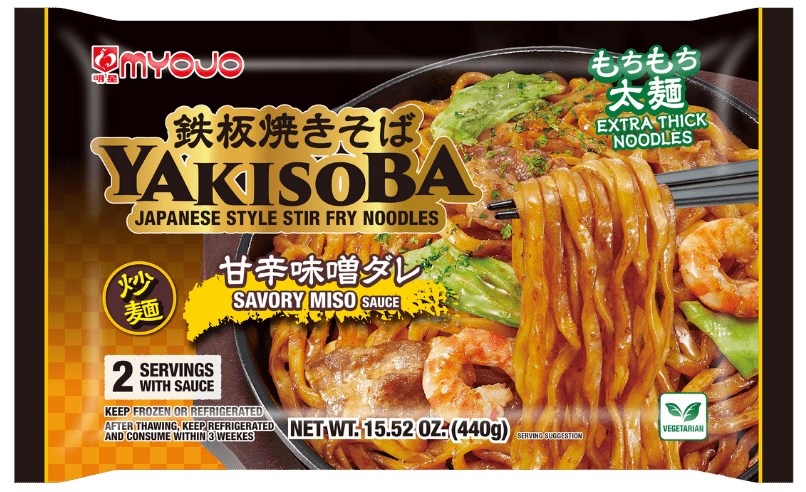
The PREMIUM SERIES is a collection of authentic yakisoba made with carefully selected ingredients and flavorful sauces. Each product offers a satisfying and unforgettable taste experience, with a variety of unique flavors to choose from. Whether you’re craving a classic or something with a twist, each dish provides a rich, delicious meal that anyone can enjoy. The PREMIUM SERIES is perfect for those who want to experience authentic yakisoba at home, bringing restaurant-quality taste right to your table.
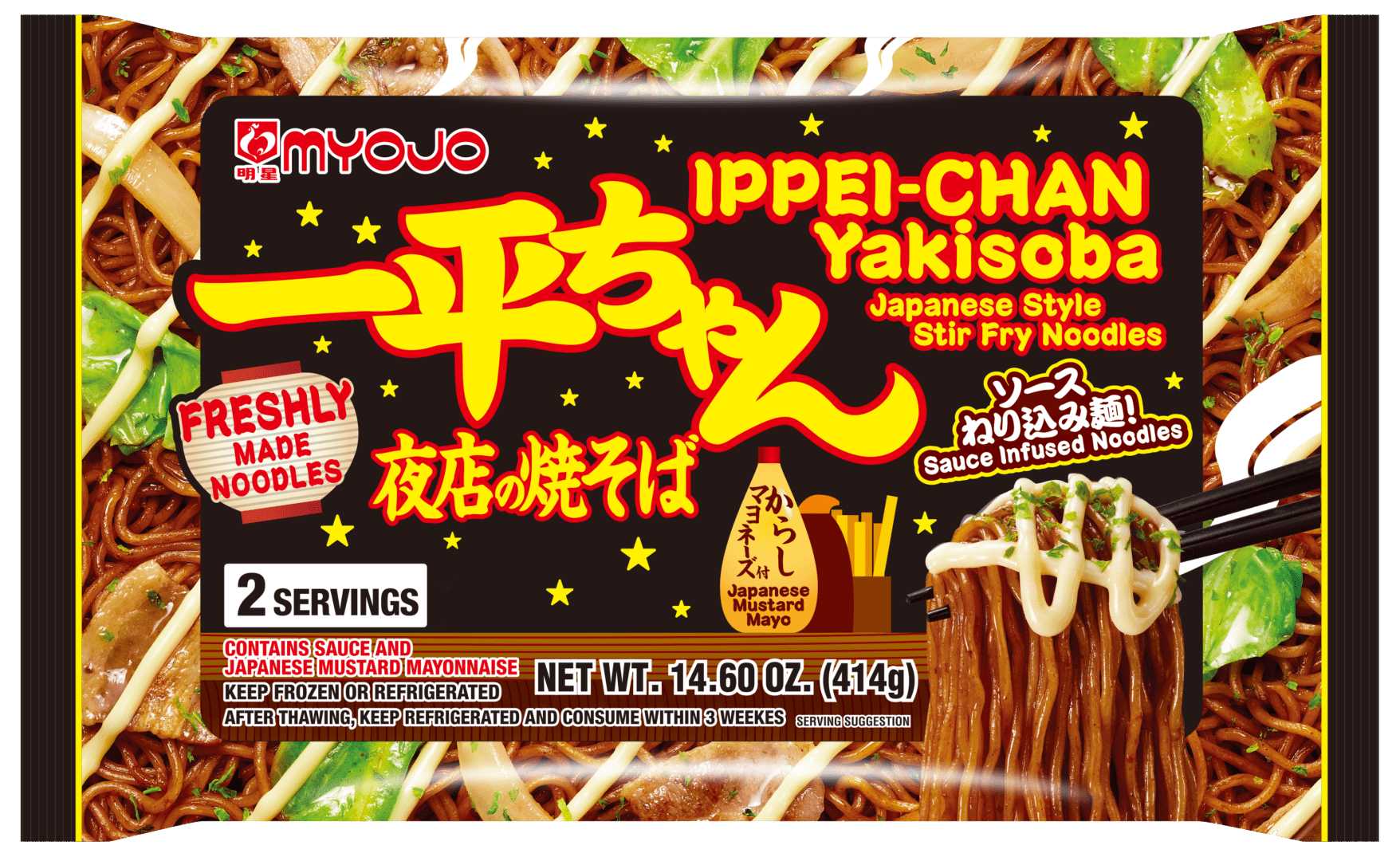
IPPEI-CHAN YAKISOBA features noodles infused with a secret sauce and a fragrant, savory sauce reminiscent of street-style yakisoba. Unlike the well-known cup version, this fresh noodle variety offers a smooth, satisfying texture, bringing an authentic, restaurant-like experience to your home. Topped with specialty mustard mayonnaise, you can enjoy the unique flavor of IPPEI-CHAN. For an even better experience, try adding red ginger, bonito flakes, and aonori (seaweed flakes).
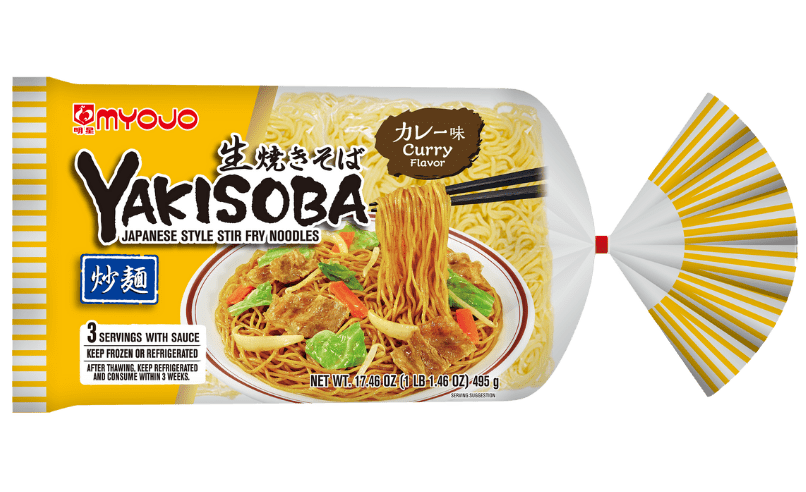
The SIGNATURE SERIES features a diverse selection of yakisoba products, thoughtfully crafted to cater to a variety of tastes and preferences. Offering an exceptional range of flavors and experiences, this series is ideal for any occasion—whether you enjoy customizing your dish or savoring a classic taste.
From the versatile SIGNATURE YAKISOBA NOODLES ONLY, which is ideal for those who like to experiment with their own additions, to the bold flavors of SIGNATURE SALT & PEPPER YAKISOBA and SIGNATURE CURRY YAKISOBA, there’s a dish to satisfy every craving. And for those seeking the traditional, the SIGNATURE ORIGINAL YAKISOBA brings a true Japanese street food experience. Enjoy the quality, flavor, and variety that the SIGNATURE SERIES has to offer.
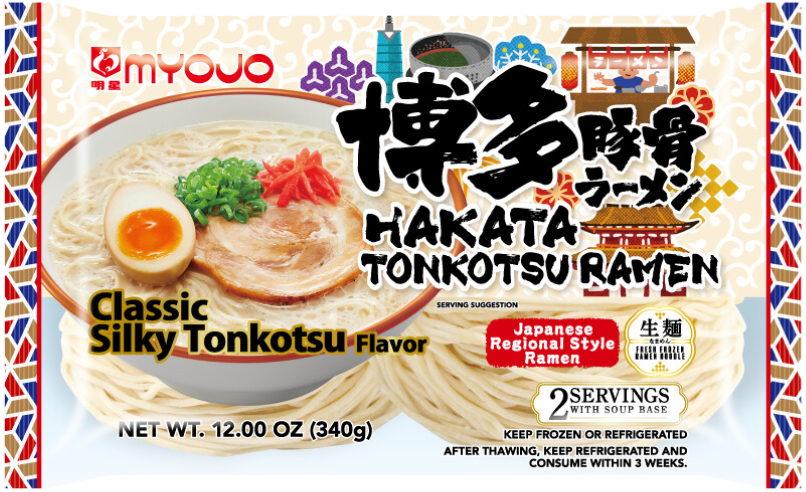
The REGIONAL SPECIALTIES series offers a convenient way to enjoy the iconic flavors of Japan’s regional ramen at home. Each product captures the distinct tastes of its origin, bringing you the authentic experience of local flavors. HAKATA TONKOTSU RAMEN features a rich and creamy pork bone broth that perfectly complements the firm, smooth noodles, with a hint of ginger for added depth. SAPPORO MISO RAMEN delivers a rich and savory miso soup, infused with garlic and blending beautifully with the thick, curly noodles, offering a rich, well-rounded taste. OKINAWA SOBA showcases Okinawa’s unique flat noodles in a light and refreshing bonito-based broth, creating a clean and subtle flavor. Enjoy the taste of Japan’s diverse regions with the REGIONAL SPECIALTIES series.
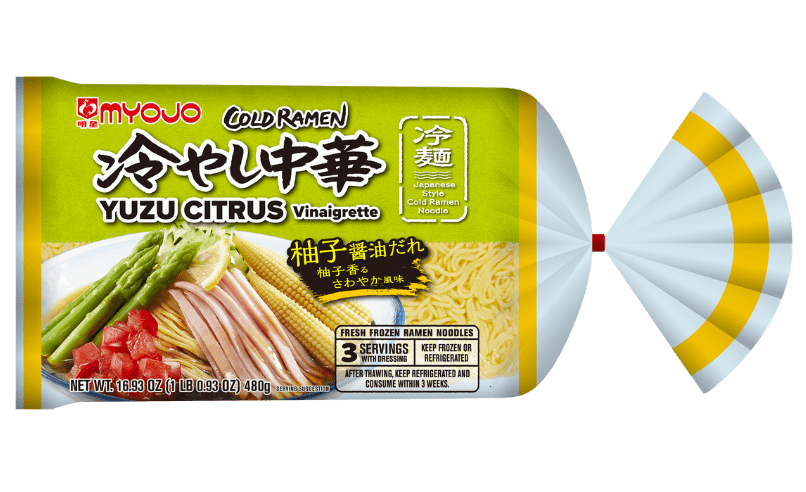
The HIYASHI CHUKA (COLD RAMEN) Series offers a refreshing and light cold ramen option, perfect for hot summer days. The Original Hiyashi Chuka features a well-balanced sweet and tangy soy-based dressing, creating a classic dish. The Sesame Hiyashi Chuka takes it up a notch with a rich sesame sauce, offering a deeper flavor profile. Meanwhile, the Yuzu Hiyashi Chuka brings a fresh and zesty citrus twist with the refreshing taste of yuzu. Each variation pairs perfectly with cold noodles and allows you to add seasonal vegetables and your favorite toppings, making it an ideal choice for the summer.
■ The Best of Both Worlds?! What are “Long Life Noodles”?
You’re probably wondering, “Are there noodles that have the texture of fresh noodles and the shelf life of dried noodles?” Yes there are! “Long Life Noodles (LL Noodles)” meet these traits you’re looking for. LL noodles are also called “packaging noodles” and they are boiled noodles with a sterilization process added to them. LL noodles are excellent as they can be stored at room temperature for a long period of time while providing a texture comparable to that of fresh noodles. Myojo USA has introduced this manufacturing method to its udon products. Myojo USA’s LL udon can be stored at room temperature for 11 months after production. If you are interested in Japanese fresh noodles but are hesitant in terms of the perishability, these noodles would be perfect for you!
Click here for Myojo USA’s fresh noodle udon products:
https://www.myojousa.com/product_cat/udon/
■ Homemade Fresh Ramen Noodles Recipe!
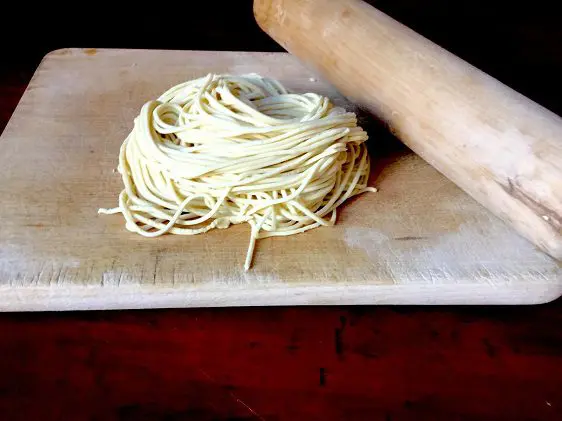
For those of you curious whether or not crafting homemade ramen noodles at home is possible, the answer is yes! In fact, there’s an abundance of recipes available with a simple search, but many of them require specialized tools like pasta machines or food processors. Not to mention, they often yield large serving sizes, which is less than ideal for the single ramen novice. We’re excited to introduce a single portion recipe that doesn’t require any special tools. Leveraging common household items, we encourage you to try this recipe.
When venturing into the realm of crafting ramen noodles entirely from scratch, there are two common hurdles to overcome. The initial challenge is acquiring kansui (a type of alkaline water), which is crucial in producing the trademark firmness synonymous with ramen noodles. To delve deeper into this subject, please refer to the article, LET’S ASK THE CHEF ABOUT RAMEN! PART 2: WHAT IS KANSUI, THE SPECIAL INGREDIENT THAT DETERMINES THE NOODLE’S FIRMNESS? Since kansui isn’t readily available to the average consumer, this recipe proposes a resourceful alternative – baking soda.
The second challenge concerns the intricate process of “noodle cutting.” Achieving the customary thinness akin to the noodles found in tonkotsu ramen often necessitates specialized equipment such as a noodle-making machine. However, in line with our commitment to offer a simple homemade recipe, we’d like to suggest the use of a conventional knife to cut the noodles. Unfortunately, this would mean that the ultra-thin tonkotsu ramen noodles are difficult to achieve in these circumstances, and so we recommend enjoying soy sauce or miso-based soups, which traditionally embrace medium to thick noodles. For a deeper look into the intriguing interplay between noodle thickness and ramen types, please read, “LET’S ASK THE CHEF ABOUT RAMEN! PART 4: WHAT ARE THE NOODLE CUTTER NUMBERS?”.
Recipe for fresh ramen noodles made at home (for one person)
Ingredients
- Bread flour: 100g
- Salt: 1g
- Baking soda: 1g
- Water: 40g
- Cornstarch (used when stretching & cutting the dough)
Directions
- #1. In a bowl, mix water, salt, and baking soda.
- #2. Sift flour in a separate bowl and mix in #1 by hand in 4 separate batches, one at a time. (about 10 minutes, total).
- #3. When the dough no longer sticks to your hands, place into a bowl, covering with plastic wrap. Let the dough rise in the refrigerator for 4 hours.
- #4. Place the dough in a heavy-duty plastic bag and step on it for 30 minutes. This allows the dough to stretch, in which case, fold the dough and continue stepping on it repeatedly.
- #5. Sprinkle cornstarch on both sides of the dough (to prevent sticking to the rolling pin and cutting board) and stretch the dough on a large cutting board with a rolling pin. If you do not have a rolling pin, you can substitute with a bottle of wine; the standard is to stretch the dough until it’s an 8 inch square, but if you prefer thinner noodles, you can make it thinner.
- #6. Sprinkle cornstarch again over the stretched dough, fold the dough in two, and cut with a knife to the desired thickness.
- #7. Place the cut noodles in a plastic bag or similar container and refrigerate overnight for maturation.
■ Conclusion
More and more restaurants in the United States offer authentic ramen. Ramen fans’ desires to taste ramen at home with a quality close to that of a restaurant are increasing these days. At Myojo USA, we offer a variety of fresh ramen noodles! Currently, we are increasing the number of stores you can purchase our ramen products from and increasing our efforts to deliver a full-fledged authentic Japanese fresh ramen noodle experience nationwide. Check out the Store Locator below to see if you can get Myojo USA fresh ramen noodle products near your area! If there are no stores near you, don’t worry, we have several online stores offering our products. Enjoy the rich flavor of our fresh ramen noodles at the comfort of your home.
Find a place to get Myojo USA fresh noodle products. Click here for our Store Locator (Online store is also available):
https://www.myojousa.com/where-to-buy/
Reference links:
Wikipedia:生麺
Wikipedia:乾麺
Wikipedia:インスタントラーメン
全麺連
全国乾麺協同組合連合会
インスタントラーメンナビ
麺くる:【失敗しない】ラーメンの生麺の茹で方・下準備を製麺師が伝授
エキサイトニュース:生麺と乾麺、栄養価に違いはあるの?専門家に聞いてみた
オリーブオイルをひとまわし:知っておくと便利!乾麺と生麺の使い分け
お手軽レシピ研究所:麺の種類 生麺、ゆで麺、インスタント麺、チルド麺の違い
グルメノート:生ラーメンの賞味期限は何日?賞味期限切れがいつまで食べられるか解説!
都一株式会社
食育大事典:びっくり水にはどんな効果があるの?
